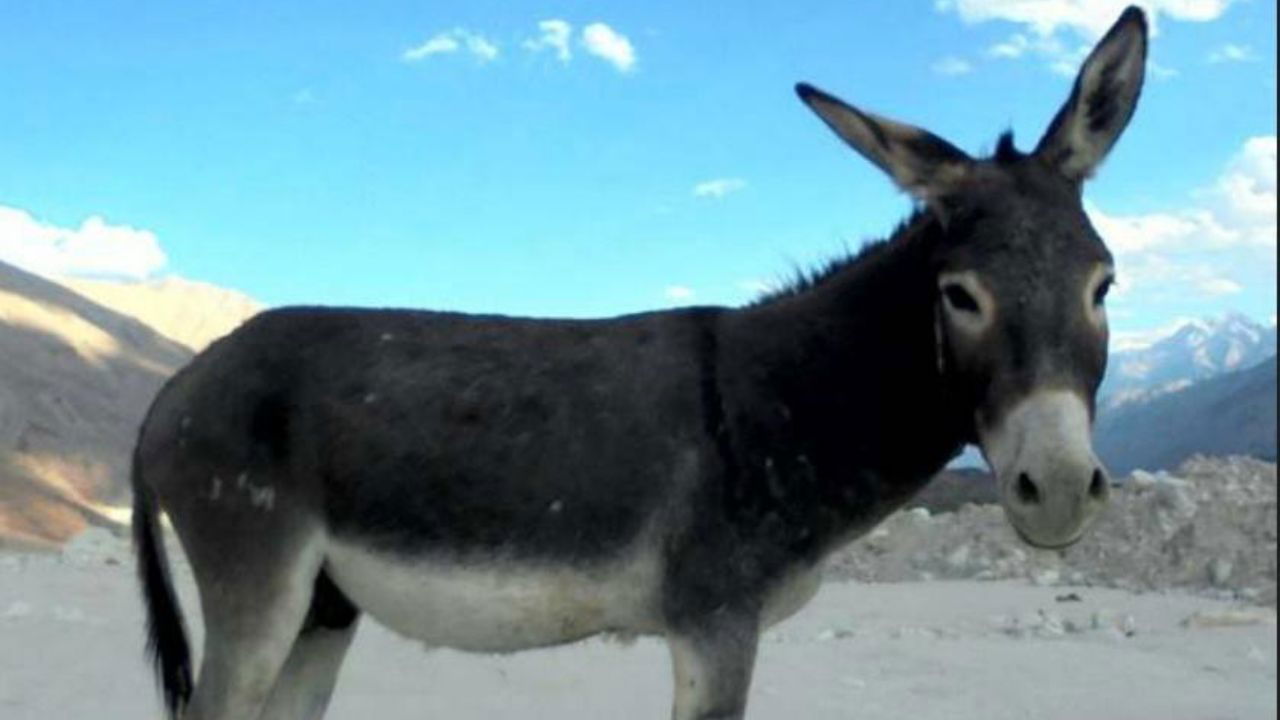
The Ladakhi Donkey, recently registered by the Indian Council of Agricultural Research (ICAR), stands as a testament to the adaptability and resilience of indigenous livestock in extreme environments. This recognition not only highlights the donkey's unique traits but also underscores the importance of preserving and studying native breeds that are integral to the region's ecosystem and economy.
Adaptation to Extreme Conditions
This breed is perfectly adapted to the challenging conditions of Ladakh for thriving in Ladakh's harsh high-altitude conditions, characterized by low oxygen levels and freezing temperatures. This remarkable adaptation makes it an invaluable asset for transportation in the rugged terrains of Ladakh, where modern vehicles often struggle. Distributed across various districts of Ladakh, these donkeys are a lifeline for communities, especially in remote areas.
Physical Characteristics of Ladakhi Donkey
The defining features of the Ladakhi Donkey are its modest size and robust physical build. The average adult body weight of the breed is:
-
Male: 82 kg
-
Female: 78 kg
These physical characteristics contribute to their agility and endurance, ensuring their effectiveness in carrying goods across the rugged mountainous terrain. Despite their relatively smaller size compared to other donkey breeds, their resilience and ability to function under severe climatic conditions make them extraordinary.
Endurance and Strength in High-Altitude Environments
The Ladakhi donkey exhibits remarkable traits, particularly its exceptional endurance for transportation in high-altitude regions. These characteristics of adaptations and endurance in harsh environmental conditions make him stand out among other donkey breeds.
Feeding Practices:
When it comes to feeding practices, animals graze on wastelands or highland pastures during the summer months, from June to September. Pregnant animals, however, remain indoors during this period. In the winter months, stored fodder and crop residues are used as feed. Concentrates like soaked peas, wheat, and barley are particularly given to nursing mothers. Despite this, the animals are well-adapted to manage fodder shortages during winter.
The registration of the Ladakhi Donkey, with the accession number INDIA_DONKEY_3800_LADAKHI_05004, is part of a broader initiative to catalog and conserve indigenous livestock. This effort builds on the prior recognition of Ladakhi cattle, another native breed known for its resilience in mountainous terrains. By formally recognizing these breeds, ICAR aims to ensure and safeguard them from potential extinction or neglect, ensuring their utility and cultural significance for enhancing the livelihoods of local communities.
















